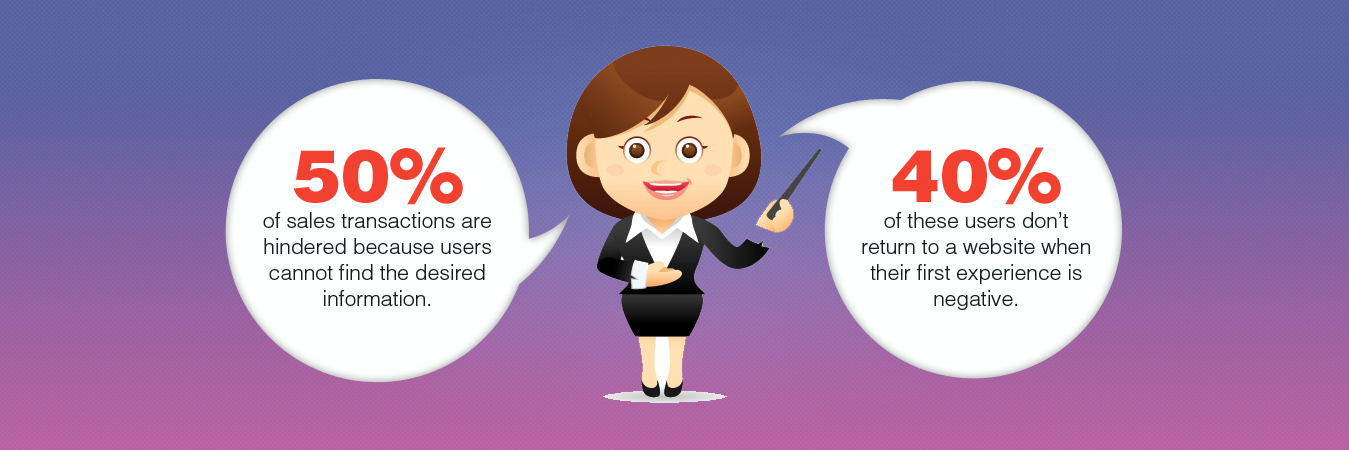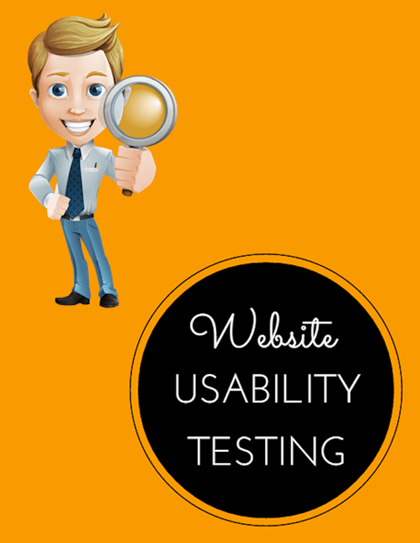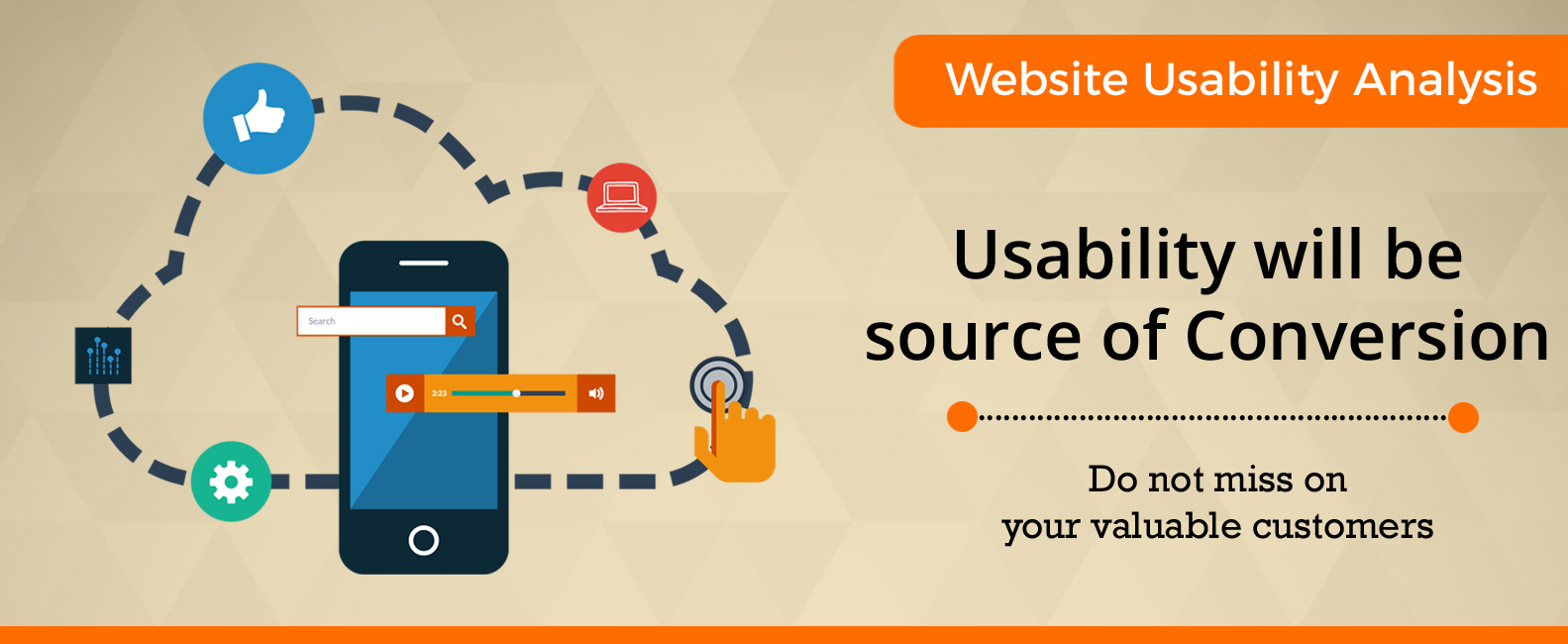Website Usability Analysis
A website that doesn’t help visitors in finding what they are looking for ranks low in usability, while the one that make the whole process intuitive and puts user at ease ranks high on usability. The usability concept takes into consideration the comfort of visitors on first interaction, ease in accomplishing tasks, problems encountered and time taken to recover from them.
Benefits of Usability Testing
How many times have you been to a website and thought, “Why can’t I find what I am looking for?”, or, “I really wish I could order online from this website instead of having to call in.” These are common and often times frustrating issues we all experience when visiting a website. This is when usability testing comes into play and why it is so critical to your online success. We should ultimately be designing for the end user and not for ourselves as designers or for what the client thinks the user wants or needs. This is a mistake often made by many due to lack of research, budget, or time. UX design and usability testing have become increasingly important for the success of a website, application, or product.
There is a great deal that stands between the user and the actual conversion of that customer,so creating the most friendly user experience possible is a major factor in converting those users. If we want to lead the user in a specific direction, we need to make it easy for them to choose to go in that direction. One of the most important aspects of ensuring a great user experience is user testing, and it should not be overlooked. The design interface is another very important element when it comes to user experience because it provides the initial reaction the user has to the site. According to ConversionXL, “It takes about 50 milliseconds for users to form an opinion about your website that determines whether they like your site or not, and whether they’ll stay or leave.”
After the design is in place, it comes time for testing of the functionality and if the design works as intended. This testing should start at the beginning and not the end of the process, which is a mistake that is often made with user testing. This can lead to big bug fixes being found towards the end of the design and development process that could have been found earlier in the process. Implementing user testing early in the process can not only save your team time, but can ultimately save your company money and keeps your project within budget.
Common problems that can be avoided by Usability Testing:
- Poor design layout
- Potential user errors
- Links that are broken
- Site errors on the page
- Inconsistent branding message
- Grammar and spelling errors within the content
Testing is an ongoing process throughout the design and build of the entire site. The more usability testing you do, the better grasp you will have on how your users think and how you can give them what they want and need. You should also keep in mind you will need to test across multiple browsers and devices. The site may perform differently on an iPhone versus an Android tablet or look different on Google Chrome or it may perform better on Mozilla Firefox.
Five Benefits of Usability Testing:
- Satisfaction scale of users with your website
- Evaluate the performance to see if it meets your usability goals
- Finding out if users are able to complete the tasks at hand successfully without any issues
- Find changes that may need to be implemented to improve user performance and enjoyment
- The amount of time it takes to complete specified tasks the site intends for you to complete will be revealed
Remember to ensure that the user testing scenarios consist of real-world user scenarios and that whomever is doing the testing is replicating how the product or website would actually be used. You also want to make sure that the user can go through the tasks without help because you want to see how a user would truly react in the product’s live environment.


5 Key Principles Of Good Website Usability
Usability means user-centered design. Both the design and development process are focussed around the prospective user — to make sure their goals, mental models, and requirements are met — to build products that are efficient and easy to use.
Here are 5 key principles of good website usability.
Let’s start with a basic, yet central aspect of usability: the availability and accessibility of your site. If people try to access your website and it doesn’t work — for whatever reason –your website becomes worthless.
Here are a few of the basics of availability and accessibility,
1. Server uptime – It’s important to ensure your visitors don’t get an error trying to load your site. Invest in good hosting.
2. Broken links – Double check that there are no dead links on your site. Nothing sends a visitor back to Google search results faster than a 404 page.
3. Mobile responsiveness – Make sure your site can handle different screen sizes and slow connections.
You could say the core of usability is clarity.
If you distract or confuse your visitors, they will either need more time to find what they came for, or they might forget their initial goal all together. Either way, they will not experience your website as user-friendly and chances are that they leave dissatisfied and with no intention of coming back. Visitors come to your site with certain goals in mind. It is your job to help them reach these goals as quickly as possible. If you can manage to do that, your visitors will be pleased and you have laid the groundwork for a positive experience.
A clear and usable design can be achieved through:
1. Simplicity – Focus on what’s important. If you don’t distract your vistors they will be more likely to do what you want them to do.
2. Familiarity – Stick to what people already know. There is nothing wrong with looking at other sites for inspiration.
3. Consistency – Don’t get cute. Create a consistent experience across your entire website to keep your visitors mind at ease.
4. Guidance – Take your visitors by the hand. Don’t expect your visitors to explore your site all on their own. Instead, guide them through your site and show them what you have to offer.
5. Direct feedback – Feedback is essential to any interaction. The moment people interact with your site, make sure to offer an indication of success or failure of their actions.
6. Good information architecture – Understand your visitors’ mental models and how they would expect you to structure the content on your site.
Learnability is another important aspect of usability.
It should be your goal to design intuitive interfaces — interfaces that don’t require instructions, or even a long process of trial and error to figure them out. Key to intuitive design is to make use of what people already know, or create something new that is easy to learn.
By now, people are familiar with a lot of design concepts used on the web. By using these concepts consistently, you meet your visitors’ expectations. This way, you help them reach their goals more quickly. As human beings, we like patterns and recognition, which is why we are better at handling familiar situations rather than unfamiliar ones.
Credibility is a crucial aspect of any website.
Even if people find the content they are looking for, if they don’t trust you, that content is worthless. Your website could cause site visitors to be skeptical about your business in any number of ways including whether or not you really exist, your reputation, or the quality of your content.
It is important that people know you are a real company with real people. Offer a clear “About Us” page together with your contact details and if possible a physical address.
Last but not least, relevancy contributes to good website usability.
It is not enough that your website is clear, your content must also be relevant. Again, it is essential that you know your users and why they visit your site.
Start with defining who your users are. Second, talk to them to find out what their goals are when visiting your site. Third, define user scenarios that demonstrate in which situation people visit your site to find what kind of content. Any design decision that you make should result in a more user-friendly website for your users.



